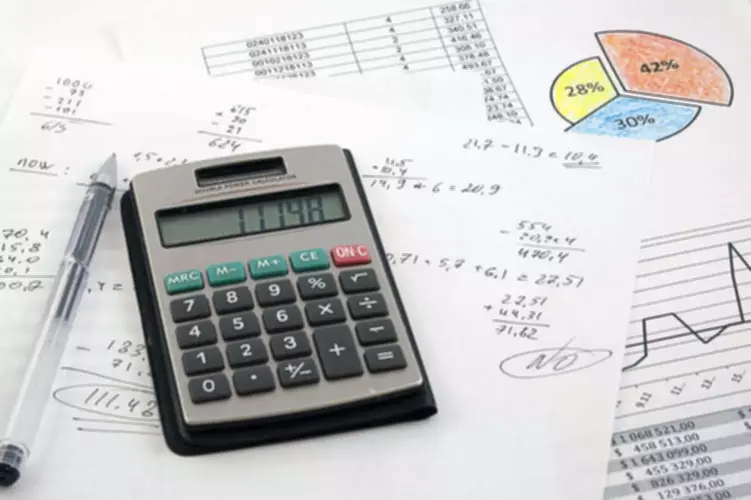Content

Calculating straight line depreciation is a five-step process, with a sixth step added if you’re expensing depreciation monthly. Here are some reasons your small business should use straight line depreciation. The straight line calculation, as the name suggests, is a straight line drop in asset value.
- Every ten years, Jason buys a new automatic car washing machine to ensure that his customers have access to quality equipment.
- The term “double-declining balance” is due to this method depreciating an asset twice as fast as the straight-line method of depreciation.
- Thus, an equal amount of the asset’s cost is deducted as depreciation expense against profit and loss during each year of the asset’s life.
- Depreciation is an accounting value charge that reduces an asset’s original cost to its scrap value at the end of its useful life.
- Accountants use straight-line depreciation because it is easy to calculate, is less of an administrative burden and is less prone to error.
Rental investors should also understand that new appliances, such as refrigerators and ovens, must be depreciated separately from the property itself. When you buy a new appliance for one of your units, you can depreciate that single item over five years for tax purposes. There are good reasons for using both of these methods, and the right one depends on the asset type in question.
How Depreciation Works With Real Estate
They are necessary if an asset is to perform to expectations over its useful life. According to straight-line depreciation, your MacBook will depreciate $300 every year. The useful life of the asset—how many years you think it will last. Investopedia requires writers to use primary sources to support their work. These include white papers, government data, original reporting, and interviews with industry experts. We also reference original research from other reputable publishers where appropriate. You can learn more about the standards we follow in producing accurate, unbiased content in oureditorial policy.
Always seek the help of a licensed financial professional before taking action. The Ascent is a Motley Fool service that rates and reviews essential products for your everyday money matters. We’re firm believers in the Golden Rule, which is why editorial opinions are ours alone and have not been previously reviewed, approved, or endorsed by included advertisers. Editorial content from The Ascent is separate from The Motley Fool editorial content and is created by a different analyst team. Get started with one of our top business credit card picks of 2022 today.
The Secret Formula
Depreciation is important because, by matching expenses with revenue, a company’s overall profitability is determined more accurately. The straight-line method of depreciation, specifically, results in even, stable depreciation charges, so it makes budgeting and financial forecasting easier. Additionally, the consistent straight line depreciation charges assist operating profitability and cash flow analysis, since they are easily identified and removed. In this calculation step, you need to subtract the cost of an asset with residual value. Here we have every value, cost of cost as $8,600; residual value as $2000; annual depreciation rate is 20%.
Based on this information, Privo is using the BLANK depreciation method. The other popular methods used in calculating depreciation value are; Sum of years method or unit of production method and double declining balance method. From buildings to machines, equipment and tools, every business will have one or more fixed assets likely susceptible to depreciate or wear out gradually over time.
Straight-Line Depreciation Examples
Depreciation policies play into that, especially for asset-intensive businesses. Find the asset’s yearly depreciation amount using the straight line depreciation method. Cash And Cash EquivalentsCash and Cash Equivalents are assets that are short-term and highly liquid investments that can be readily converted into cash and have a low risk of price fluctuation.

It’s based on long-standing conventions, objectives and concepts addressing recognition, presentation, disclosure, and measurement of information. Our calculator measures asset lifespan in years, but you can switch to another time period if that’s more useful to you. The fixed cost of the asset is $500,000 and the estimated residual value is $25,000.
With the straight line depreciation method, the value of an asset is reduced uniformly over each period until it reaches its salvage value. Straight line depreciation is the most commonly used and straightforward depreciation method for allocating the cost of a capital asset.
It requires the use of MACRS recovery periods to be acceptable for U.S. tax purposes, prompting the need for additional calculations. Some assets are more correctly depreciated based on output, input or usage. Get instant access to lessons taught by experienced private equity pros and bulge bracket investment bankers including financial statement modeling, DCF, M&A, LBO, Comps and Excel Modeling.
These are faster than what management decides to employ on the reported financial statements put together under the Generally Accepted Accounting Principles rules. Management is likely going to take advantage https://quickbooks-payroll.org/ of this because it can increase intrinsic value. The information provided on this website does not constitute insurance advice. All content and materials are for general informational purposes only.
